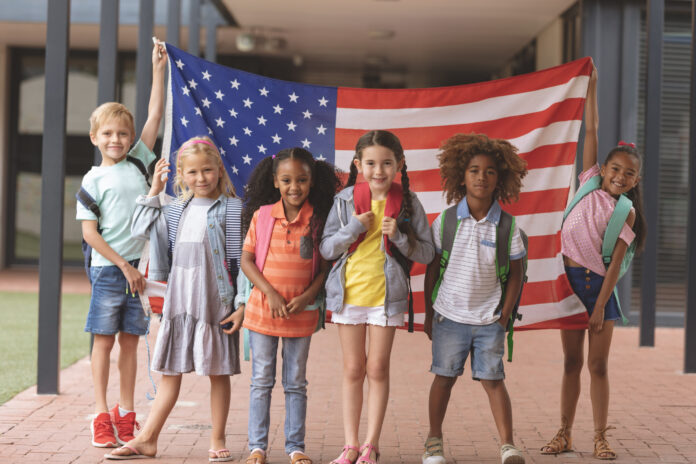Until a few years ago, public school data found that black students were suspended at three to four times the rate of white students. A survey of students in grades 9-12 found that 15.5% of black but only 6.4% of white students engaged in school fights. Another survey estimated that 17% of black versus 7% of white students reported gangs in their schools.
Social-justice advocates generally believe that one important source of these black behavioral problems is racially biased policies in elementary schools. It is biased school treatment, received in these early grades, that creates the behavioral problems black students exhibit in middle and high school. These dynamics, they claim, are responsible for a school-to-prison pipeline.
To test this thesis, Jayanti Owens and Sara McLanahan studied the suspension rates of 2,396 children as they aged from 5 to 9 years old. Overall, 28 percent of black but only 7 percent of white children were suspended at some point during the four years. The study identified baseline behaviors at 5 years old – just when children entered school. It then compared subsequent suspension rates of black and white students with the same baseline behaviors.
Fifty-two percent of black students compared to only 7 percent of white students attend schools dominated by low-income minority students. Students attending these schools were suspended more often than students elsewhere, holding constant the baseline behavioral evaluations. These differential school policies explain one-fifth of the racial suspension gap. The study then estimated that 46 percent of the racial gap was the result of teachers’ differential treatment based on black and white students in the same school with the same baseline behaviors.
Only 9 percent of the racial suspension gap was due to baseline racial behavioral differences. Over the four-year period, however, the racial behavioral gap increased substantially; so much so that if the behavioral evaluations at 9 years old had instead been used, behavioral differences would now explain 23 percent of the racial suspension gap, with a comparable decline in the share explained by teacher bias.
Social-justice advocates believe that these growing racial behavioral gaps reflect black students’ adaptation to biased school policies in earlier grades – but I see other explanations. First, the out-of-school differences Owens and McClanahan identified do not account for how gun violence affects black students. “When there is violence nearby, students are less able to focus on academic tasks, and their performance suffers,” sociologist Patrick Sharkey indicated. Second, Owens and McClanahan don’t account for family churn, where a sequence of stepparents increases the psychological stresses as young children age. McClanahan and Cynthia Harper reported, “The adolescents who faced the highest incarceration risks . . . were those in stepparent families.” These factors, I believe, are modestly responsible for the growing racial behavioral gap, lessening the importance of teacher bias.
Second, the suspension policies in poor minority schools – often characterized as zero tolerance – may be a reaction to classroom social dynamics. In studying Pittsburgh adolescents, Mark Berg noted:
[Many] decent youths adopted a violent public posture – even though it violated their own personal beliefs in conventional norms – in order to deter the aggressive overtures of other youths in their neighborhood. If they did not convey this posture, many young men believed they risked inadvertently conveying a vulnerable demeanor which could only invite additional victimization.In his memoir The Beautiful Struggle, Ta-Nehisi Coates gives a vivid example of how decent boys can adopt violent behaviors. As a young man in a middle school gifted program, Coates was vulnerable to his more brutal peers. For a time, he avoided fights: “My style was to talk and duck.” But eventually, he could not talk his way out of trouble. When hit in the face, he “busted out crying.” The news of this reverberated around the school. Coates recounted: “From then on, I was the weakest of the marks, and my weakness was despised. By the gifted kids, most of all. Some of my whippings were just macho show, but mostly they were pure logic.”
Finally, Orlando Patterson claims, “There has emerged a remarkable degree of uniformity in the culture of masculinity among all classes and regions of black youth in America.” Many black boys focus on being “cool” – adopting a distinct style of speech, posture, and walk that signals strength, control, a lack of emotion verging on indifference, fearlessness, and toughness, and success at fighting when necessary. If we add to this the negative impact when young black students become increasingly aware of their academic deficiencies, the baseline assessments could further underestimate behavioral problems that appear as black children progress through elementary school.
If my assessment of the large racial suspension gap in early grades is correct, then focusing on teacher and school biases is not helpful. Instead, we must combat the adverse group social pressures and adverse home and neighborhood dynamics that black students experience. These initiatives would lessen behavioral problems that lead to suspensions. Otherwise, more students will enter middle school with significant behavioral problems that will only worsen.









What does the disparity in having a Father present in the home or having a single do for discipline/